Hyundai Kona EV review and buyer's guide
Here’s everything you need to know about choosing, using and charging Hyundai’s new all-electric Kona small SUV. Are you finally ready to leave internal combustion behind entirely..?
The new Kona Electric promises (on paper) to be a bristling little city machine, with the latest features in a reliable, practical - and even somewhat affordable - five-seat small SUV. But is it?
Let’s run through what you can expect from the new Kona Electric, and see if they’ve created a much more appealing product that is enough to entice you away from the ritual of fossil fuel dependence.
They’ve had seven years to improve on the recipe, but have they undercooked it?
What was so great about the first Kona EV was the fact Hyundai didn’t cut corners, unlike some carmakers. (Looking at you, Nissan Leaf.)
Hyundai put in the R&D investment early, making sure it was one of the only EVs on the market with a dedicated active thermal management system for keeping the battery’s temperature regulated. And it was one of the most affordable EVs, considering how well it was built. Certainly a Leaf was cheaper, but it was severely under-developed; premature, if you will.
But the moment you open the doors you can feel the tightness of the whole package. There are no hollow echoes as you close the door, no tinny noises from the tailgate, no whirring of the moving parts underneath. Everything feels solid. A BYD or MG does not feel like this.
The new Kona Electric is, in simple terms, a return of the same basic powertrain in two distinct flavours: big battery and small battery. The big battery is a 64.8 kWh unit, and the small battery is a 48 kWh unit. (If you’re hazy about batteries, click here >>)
The big battery gets a 150kW AC electric motor driving the front wheels, and the small battery gets a 99kW AC electric motor that also drives the front wheels. There is no all-wheel drive option, for either powertrain.
The base model (AKA ‘Standard Range’ - that’s the small battery) costs $54,000 before on-road charges.
The ‘Extended Range’ (big battery) can be had for $58,000 (before ORC) in either the base model specification, or in a ‘Premium’ specification with more features, for an additional $10,000 jump at $68K before adding on-road costs.
But you cannot have a Standard Range in Premium specification, and frankly, that’s a bit poor. There’s a good argument for having a higher equipment level in the shorter-range, smaller battery, less powerful version where city based commuter traffic is highly likely to be the primary usage case. In these instances, consumers might actually be willing to pay more to have all the fruit in these grinding driving conditions - just saying, Hyundai.
The difference between the base model and the ‘Premium’, or in other words, the additional equipment you get for your $10,000, is of questionable value. The key items you get:
Bose 8-speaker premium sound system
Heated: front & rear outboard seats, steering wheel; cooled front seats
19-inch alloys
Heads-up display
Blind-spot view monitor
360-degree camera system
Remote smart parking
Solar treated front door glass & windscreen, +acoustic treated windscreen
Powered tailgate
Leather interior
What’s questionable about these additional features is how badly you need them, because $10,000 is a significant step up if you’re already considering the Extended Range in base trim, but it’s $14,000 more than the small battery Standard Range.
You’d be paying $4000 more for a hypothetical additional range of 135km with every tank of electrons, which if you notionally were to recharge the car twice a week from flat for five years, becomes 70,000 additional kilometres you could drive over the Standard Range before having to recharge. And obviously you can’t use those consecutively. The $4000 extra is about convenience.
But then again, if you have a smaller battery, it will recharge quicker than a bigger battery, all other things being equal. More on that below - and not everything is as it seems - so keep reading…
This is a proper EV designed as one from the ground up. And there’s also a regular parallel/series hybrid in the range, plus an ordinary combustion version, and a performance N-Line option.
You can read the combustion-only Hyundai Kona review & buyer’s guide here >>
Or read the Hyundai Kona Hybrid review & buyer’s guide here >>
And if you’re curious about what the future holds in terms of using your Kona EV every day, here’s what living with the last Kona Electric for 12,000km was like >>
But what’s important to note here is they’ve designed this new Kona platform as an EV first and adapted it to fit the combustion powertrain. Unlike the previous Kona which was designed primarily as a combustion platform, that was adapted secondarily to take the Kona Electric powertrain, so the new one handles much better through corners.
Hard to believe but the previous generation Kona Electric debuted in 2017.
This fundamental design strategy means the ride and handling will be very different in what’s known in automotive engineering as ‘modal separation’. You might even notice this if you’re stepping out of the old Kona Electric into the new one.
Essentially, the car hits a bump, that shoves the wheel upwards, pushes on the damper and spring, sending kinetic energy into to body which makes you bounce. ‘Bump and rebound’ is how the spring and damper respond to that load, which is affected by the geometry of the vehicle and ultimately its weight at certain speeds.
If you want to understand more about how a carmaker’s engineers tune a vehicle, check out my in-depth technical interview with Graeme Gambold >> for more on dampers, spring rates and all that juicy stuff.
Put simply, new Kona won’t be faster in a straight line, but it will sit flatter through corners, it’ll absorb bumps better and the body will ‘settle’ down sooner when you plough through Australia’s crap roads.
Hyundai says:
New-generation KONA Electric benefits from a chassis tuning approach that sees Hyundai Australia involved early in the development of a model, providing HMC R&D with input to achieve the chassis characteristics required for the Australian market.
-Hyundai Australia
So nice to actually hear a carmaker telling you something useful and informative, without dissolving into buzzwords.
Paraphrasing here, what they’re saying is that the EV won’t feel like it has some enormous, heavy pendulum making the top of the car feel like it’s being dragged around by the battery. Not that the old one felt that way in a profoundly negative sense, but it was present whenever you started getting into some busy cornering.
At the same time, it’s quite nice to drive on our notoriously broken, decaying, crumbling roads.
GOING INSIDE
Gone is the centre console’s conventional transmission selector, mounted instead onto the steering column, possibly in an attempt to lunch off Tesla’s minimalistic, clutter-free cabin.
Fortunately, they do appear to have left a healthy amount of tactile, backlit buttons and dials so that you don’t have to go ferreting through touchscreen menus to do something as mundane as turn the A/C fan speed down. Although there is possibly going to be some gnarly glare coming off that brushed aluminium facia which is going to wash-out the button illumination depending on the sun.
A pair of conjoined 12.3-inch digital cluster and multimedia displays sweep across the dashboard in front of you and it’s capable of that whole ‘Over-The-Air’ updates business.
The wheelbase on Kona (the platform) is the same as the old car, meaning Hyundai’s claim that there’s “77mm more leg room” is probably derived from some undisclosed modification of the cabin, which is negligible at best. You’ll never know where they found 7cm and it doesn’t really matter because there’s plenty of legroom for the vast majority of people.
If you’re a particularly tall driver, just adjust the seat. Modern cars are designed to accommodate the 95 percentile of consumer height, so unless you’re Stephen Merchant, you’ll be perfectly fine. If you’re still concerned, Hyundai says there’s also 15mm more headroom than the previous model. Moving on…
The cargo area in the boot measures to 407 litres, with a 27-litre “front cargo area”, as they describe it. But it’s more like a plastic underbed storage tub. The boot is modest in size, but still not as bad as what’s on offer in the Mazda CX-3 or the new Subaru Crosstrek which has less boot space than its predecessor. (Not that Crosstrek comes as an EV.)
There an electronic drive selector stalk behind the steering wheel which is a win for centre console storage, and while you’re down there, two slide-away cupholders can be deployed with the push of either of two mechanical-release buttons.
The cabin’s temperature is taken care of using a heat pump which draws waste heat generated by the traction battery. For the opposite end of the temperature demands, dual-zone climate control is also present on the base model, as is an interior Vehicle To Load (V2L) power outlet and wireless phone charging.
As for lighting, you get LED headlights, DRLs and taillights on every variant. But that’s about where the desirable features end for the base model, as discussed above.
Equipment of note the base Kona Electric gets include:
satnav, DAB+ digital radio,
wireless phone charging (15 watt, w/ integrated cooling)
smart proxy key + remote start
‘premium’ cloth seats
rear cross-traffic alert & braking
adaptive cruise control
safe exit warning
front-centre airbag
front & rear parking sensors
17-inch alloys
tyre pressure monitoring
temporary spare/space-saver
auto rain-sensing wipers
Interesting features
An “Active Air Flap” sits behind the front bumper/grille which opens at lower speeds and closes at higher speeds, in concert with aerodynamic wheel designs with minimal openings to further reduce drag. In fact, it’s so slippery this vehicle it has not only reduced the drag co-efficient from 0.29 to 0.27, but it’s better than a Mazda 2 which is lower, smaller and shorter.
It’s hard to believe, but there’s actually a space-saver spare fitted on all Kona Electric variants, under the boot floor. It’s less than the idea full-sizer, but at least in the event of a flat you can be mobile again long enough to get to the nearest tyre shop.
Would you like an EV that is “capable of towing”? Well, you’re looking at it. The ‘Extended Range’ variants are capable of towing (with the addition of a towbar, obviously) a maximum braked capacity of 750kg, including a maximum towball download of 100kg. Look, it’s not claiming to be a Pajero Sport on towing, but at least it’s something.
In the case of an unbraked trailer, towing capacity is limited to 300kg. So hopefully you’ve got a very light 6X4 box trailer if you intend to utilise this notional ‘capability’ - if that’s the right word. Also, Extended Range variants are endowed with a trailer pre-wiring package, making the accessory towbar and wiring fitment that little bit less convoluted.
Much less convoluted than Japan trying to flip over its lunar lander, for example.
CHEAPEST WAY TO OWN A NEW KONA ELECTRIC
The Federal Government recently passed the Treasury Laws Amendment (Electric Cars Discount) Bill 2022. The new legislation effectively removes all fringe benefits tax (FBT) from EV and PHEV ownership.
FBT applies to novated leases (also called ‘salary sacrifice’). The new laws mean novated leases on EVs and PHEVs just got a lot cheaper. The term ‘unprecedented discount’ comes to mind…
How much cheaper? In many cases a $70k EV or PHEV will now cost novated lease holders less than the cost of a $35k conventional car, in terms of their take-home pay.
Novated leases are available to many ordinary Australians, and the car can be for 100 per cent personal use. Nor do you have to be on a particularly high salary to benefit from one.
If you’re new to novated leasing, and want to know more, I just put together a basic guide here: Guide to novated leasing.
I'll help you save thousands on a new Hyundai Kona EV here
Just fill in this form. No more car dealership rip-offs. Greater transparency. Less stress.
BATTERY CHARGING & RANGE
Both the big battery and small battery powertrains come with the standard heat pump and battery conditioning, which Hyundai says helps bring the maximum claimed range up to 505km (WLTP) and with a 45min fast-charge capability - that’s on the 99kW and 150kW motors, both delivering 2WD.
That maximum range of 500+km (ballpark) is only possible when fitted with the 17-inch alloy wheels - they’re lighter and therefore require less energy for the powertrain to spin, essentially, compared with the 19s.
It’s unlikely you’ll achieve the so-called “real-world range of up to 505km (WLTP)”, because those test cycles (the WLTP bit) are conducted in laboratories and only simulate average driving conditions with an average ambient temperature. In Australia, higher average ambient temperatures, hills and traffic and longer distances between destinations (approximately) will all eat into your ability to achieve the nominated maximum range.
Fortunately for Australian buyers, and this is a testament to Hyundai putting in the R&D legwork early on the first Kona EV, you get an active, liquid-cooled battery thermal management system, meaning the battery has an independent system designed to keep the battery at a steady temperature to reduce degradation over time and keep the high-performance battery singing and dancing.
With the Standard Range battery capacity growing by 24 per cent over the previous generation Kona Electric, this has benefits and drawbacks.
The new one in top-spec Premium, with the big battery, weighs 52kg more than the old Kona Electric Highlander: power-to-weight has dropped from 86.1 kW/t to 83.6 kW/t. So in a straight line, the old one will be quicker.
It’s the same story going for the notionally lighter, smaller Standard Range. The older, smaller 39kWh Kona weighed less than 1600kg (1593kg to be precise) so it had 62 kW/t. The new one: 1690kg (that’s 197kg more weight) for only 58 kW/t.
It’s just as well they did an Australian ride and handling tune.
Now, at this point, you’re probably thinking, ‘That’s fine, I’m only driving my Kona Electric like a civilised human being. Tell me about recharging this bigger battery.’
Okay, well they’re saying you now have the capability of filling up with electrons in 45 minutes on a DC fast charger, from 10 to 80 percent. That’s much closer to a reasonable stoppage time if you’re driving long distance, but it goes without saying that most people could be relieved, fed and their legs stretched within 30 minutes on a big drive.
Claimed range on the Standard-battery Kona Electric is up to 370km - which is more than enough, notionally, for getting all of your daily commuter driving done on a single charge in a metropolitan city, I’d suggest. You could very easily top that up once or twice overnight during the week if you’d prefer.
But something slightly dubious Hyundai is claiming about his vehicle is its ability to recharge at 11kW. Why? Because in Australia the maximum amount of electricity you can extract from a typical wallbox charger is 7.2 kilowatts - and it’s only capable of providing single-phase.
Recharging at 11kW would require 3-phase electricity on a separate circuit, provided by a dedicated and specialist-installed wallbox, obviously. (You would want to make sure your electrician is qualified to install it.)
Check out The best way to charge your EV at home >> for more on this subject.
Is there justification for three-phase?
Committing to 3-phase wallbox recharging system at home or even the office, perhaps if you’re the boss and can have that kind of system installed, is not out of the question here. But it is much more expensive and therefore harder to justify.
If you’re likely to get home with the Kona completely flat, and need to turn the vehicle around to go again in six hours or thereabouts, then sure, it’s not irrational.
But for the vast majority of consumers like ourself, recharging overnight is going to take about 9 hours at 7.2kW on your single phase wallbox.
Do you need 11kW on three-phase? Answer: only if you’re going to come home dead flat and need to go again in less than 9 hours or one sleep. Translation: highly unlikely.
Positioning the primary charging port in the front bumper might be an efficiency gain for charger access in parking spaces, but it means anybody who reverse parks (like you should be doing anyway because: safety in forward vision) is forced to drive into a charging bay and reverse out.
To be fair to Hyundai, they already have the inverter plumbed in up the front of the vehicle, so fitting the charge receptacle there makes more sense than running more heavy orange cables to the rear or centre.
And there is onus on the charging infrastructure companies here to provide enough cable in the same way you can park at the service station on the wrong side and most bowser hoses will still reach the opposite side of the vehicle. Having said that, copper cable is thick, heavy and expensive per metre compared to rubber fuel hose.
PRACTICALITY: Using it every day
Kona Electric’s luggage capacity increases by 75 litre to 407 and expanding to a 1241 litres with the second-row seats collapsed, that’s an additional 127 litres over the old Kona Electric. Not only is the volume increased, the cargo area itself is much more practical, with a wider aperture and a lower boot floor lip edge height, so large bags or bulky prams don’t have a painted bumper as high to clear.
The boot space itself is 86cm long, a smidge of 1 metre wide, and just over 70cm high although doesn’t specify if that’s to the roof. A twin pram from UppaBaby is 83cm long, just for instance, but you’ll be more likely to stow it width-ways across the space due to the rake of the row two seatbacks.
Three top tether anchor points are present in row 2, with two ISOFix points for each of the outboard seats.
The boot floor also features a folding dual-level floor if you need extra depth. Removing the parcel shelf is always a good option for bulky stuff or just improving the overall functional efficiency of the boot in any case.
The front engine bay cargo compartment holds only 27 litres, which is enough for its own charging cable and a backpack, and part of it can be opened to access the vehicle’s 12-volt battery.
The tyre pressure monitoring system will alerts the driver if a tyre’s falls below the acceptable safe pressure range, and will provide active individual tyre pressure readouts.
Outside the vehicle, pedestrians will get a ‘Virtual Engine Sound’ emitted from a front-mounted speaker to make them at least vaguely aware there is some kind of mass following them at low speed levels, such as through a carpark.
BUILD QUALITY & LOCAL TUNING
When it suits people to be critical of cars, it’s easy to take aim at good examples of bad build quality, so let’s highlight the fact Hyundai Kona Electric is the opposite. The build quality here is outstanding, especially so when you put it up against the compromise you would be making in a BYD or even a Tesla.
Given we’re looking at a small SUV here, the MG ZS EV is another example of the build quality coming down in the interior and overall presentation in order to offer you that expensive battery-propelled driveline at a lower cost.
Which carmaker would you rather have to deal with in the event of some widget failing? Hyundai Australia has a substantial customer service reputation, and certainly has the track record to prove it. Whereas BYD is run by a subsidiary called BYD Automotive who relies heavily on MyCar for servicing.
The BYD brand has only been around in Australia for a couple of years now, and there’s already questionable quality reported about the ATTO3 >> If BYD can offer a (roughly) 400-kilometre range EV, both weighing 1.7 tonnes, but for $15,000-20,000 less, you have to wonder where BYD has cut corners.
This is the problem with a brand we essentially know nothing about. Hyundai boasts about how much work they’ve put into developing the new Kona platform and the EV in particular. Case in point, they’ve invested in using 50 per cent more hot-stamped 150K and 180K ultra-high-strength steel, up from 12 parts in the old car to 18 in this new version. Hot-stamped steel helps minimise cabin deformation in the event of a collision. Learn more about metallurgy here >>
Hyundai talks about the body structure’s increased average tensile strength of 10 per cent. BYD does not.
You cant guarantee the Kona Electric will be much nicer to drive as a result of the local ride and handling development being done extensively in Australia. But adding to the vehicle’s comfort levels are the:
sound-absorbing pads under the carpet and in the luggage area, which minimise road noise intrusion
Then there’s wind noise which Hyundai says has been reduced by applying better sealing around the lower door seals, and cut-line seals to the side mirror caps, but primarily through the use of a double-laminated acoustic windscreen.
As for the Aussie chassis tuning, Hyundai Australia was involved early in the development and basically handed the Hyundai factory all the input data required to R&D the chassis characteristics specifically for the Australian market. (BYD doesn’t do that.)
Hyundai Product Development Manager Tim Rodgers said:
Kona Electric performed exceptionally across the full range of Australian road conditions
R&D is really thinking about each and every market as they’re working through their tuning program.
The alternative to this is you simply build it in right-hand drive and ignore any nuance for the consumer in that particularly small corner of your otherwise enormous market. Hyundai makes about 6.5 million vehicles annually and only sells about 40,000 units in Australia every year.
They fact such a gargantuan company has put the resources into calibrating a (let’s be honest here) relatively low-volume model for us here should speak volumes. BYD sells 3 million cars annually and doesn’t put in that kind of work. The term ‘Sausage factory’ comes to mind.
KONA EV ALTERNATIVES
What happens now that the new model is here is the previous model Kona becomes less desirable. The styling is considered outdated, the tech is aging, the platform itself is right at the end of its intended showroom life and people, generally speaking, want the sexy new toy.
But there will still be some 2023 Kona Electrics hanging around that you might find for a good price. Failing that, there’s a bunch of different options when it comes to buying an EV these days. How times have changed.
Consider the MG 4 51 Excite >> which is one of the best value electric cars on the market right now, and from a brand that actually intends to stay put and seems to offer actual customer support with a healthy dealer arrangement.
There’s the Kia Niro: sporty, big enough, quick >> and with Kia’s signature futuristic styling and yet highly functional interior.
Or there’s the highly appealing MG ZS EV >> which is also in the SUV category, albeit it with that brand-new-old-car level of quality to the interior.
Overall the Hyundai Kona Electric on the other hand makes perfect sense for your first step out of the combustion vehicle womb we’ve enjoyed for so long. This is a vehicle designed from the ground-up to be a high quality product, built by a car company that knows what it’s doing and which has baked practicality, reliability and robustness into the recipe.





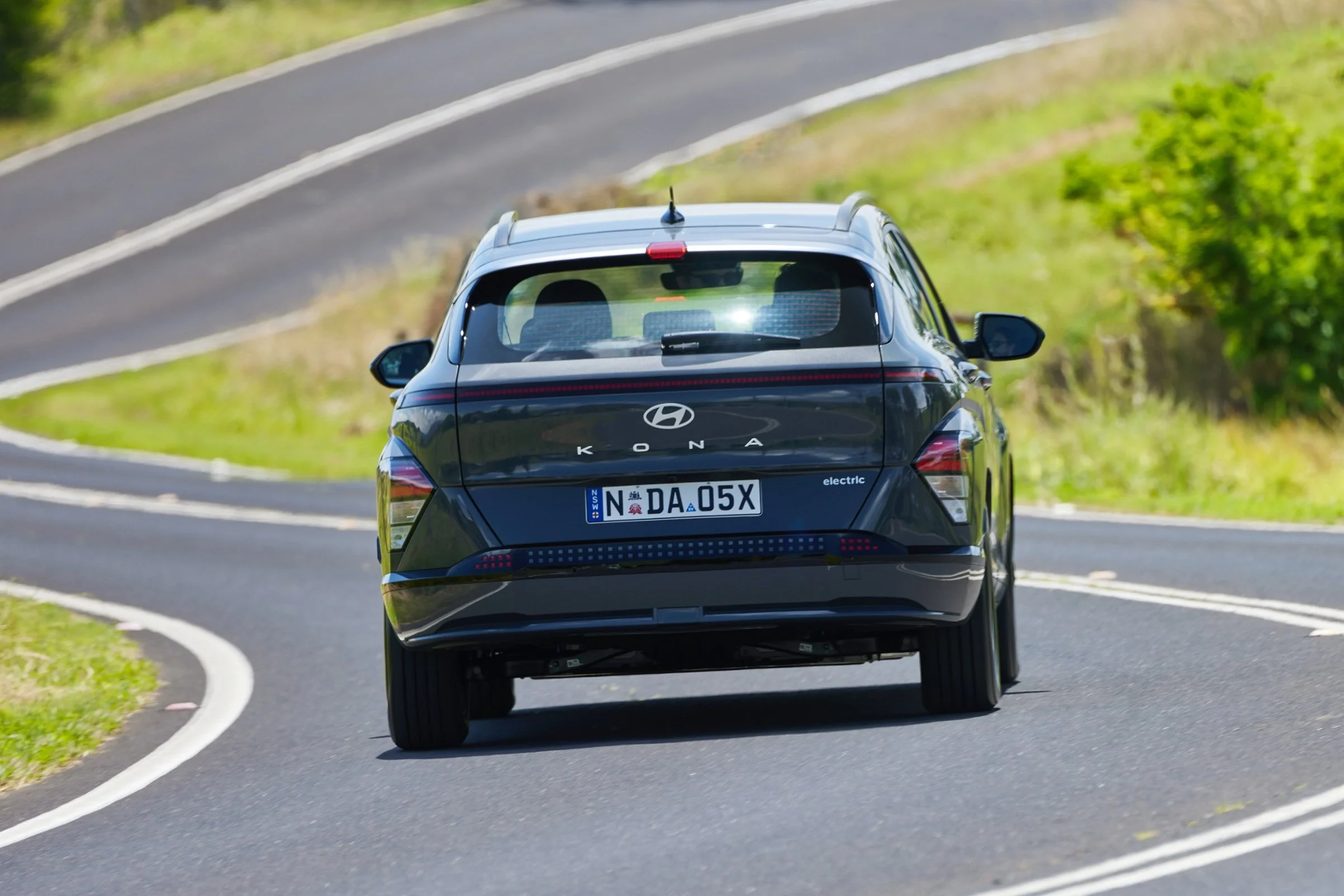

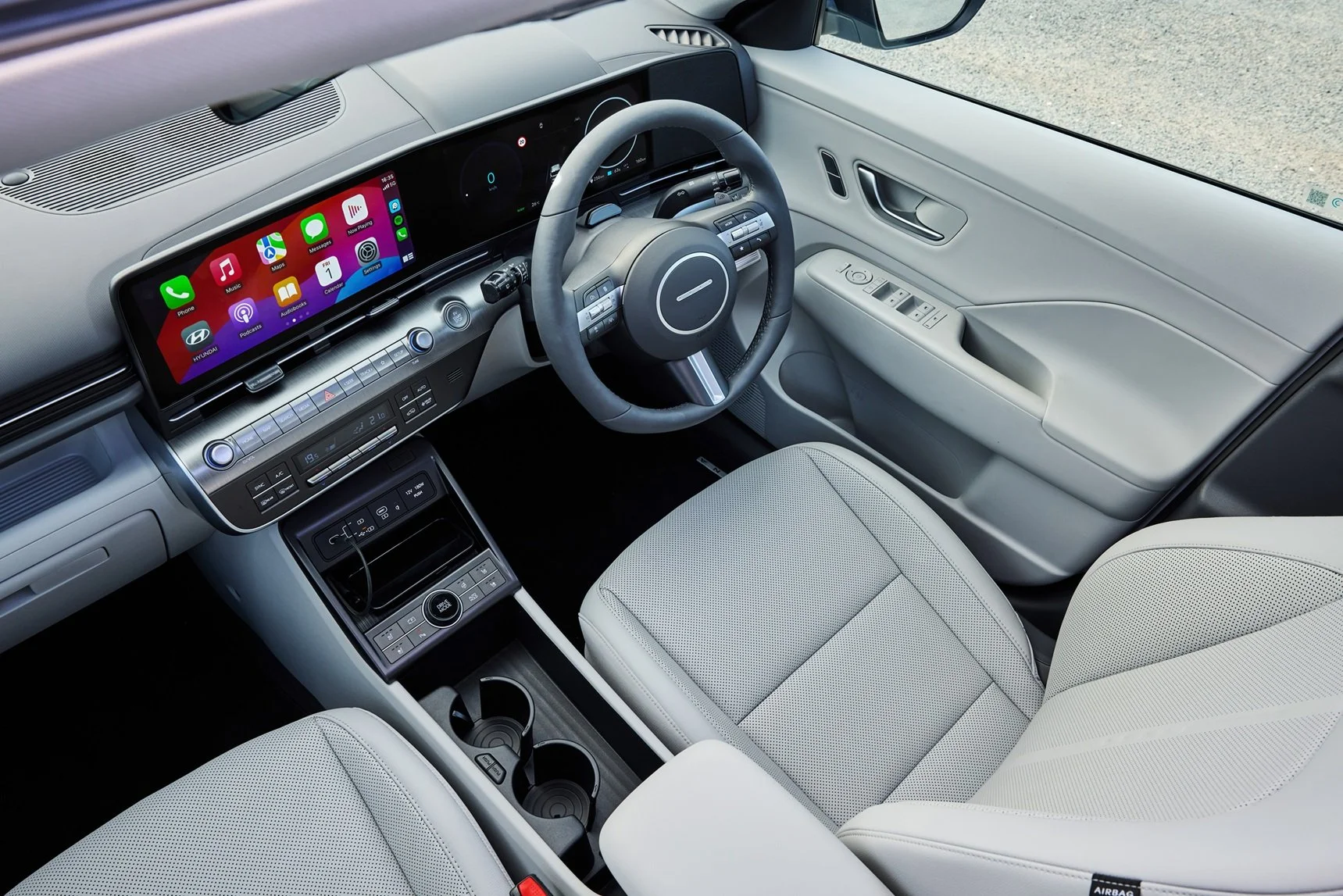

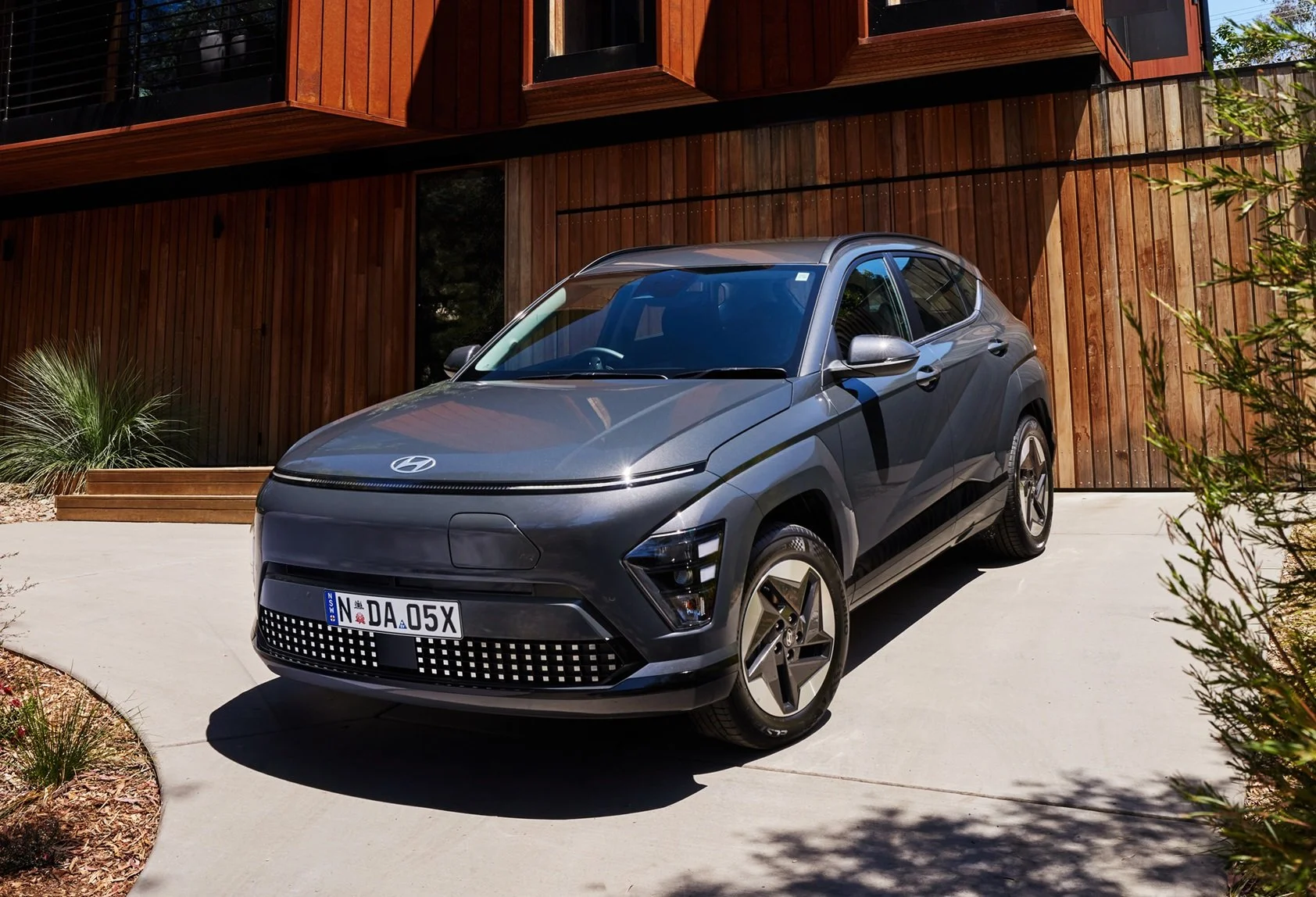

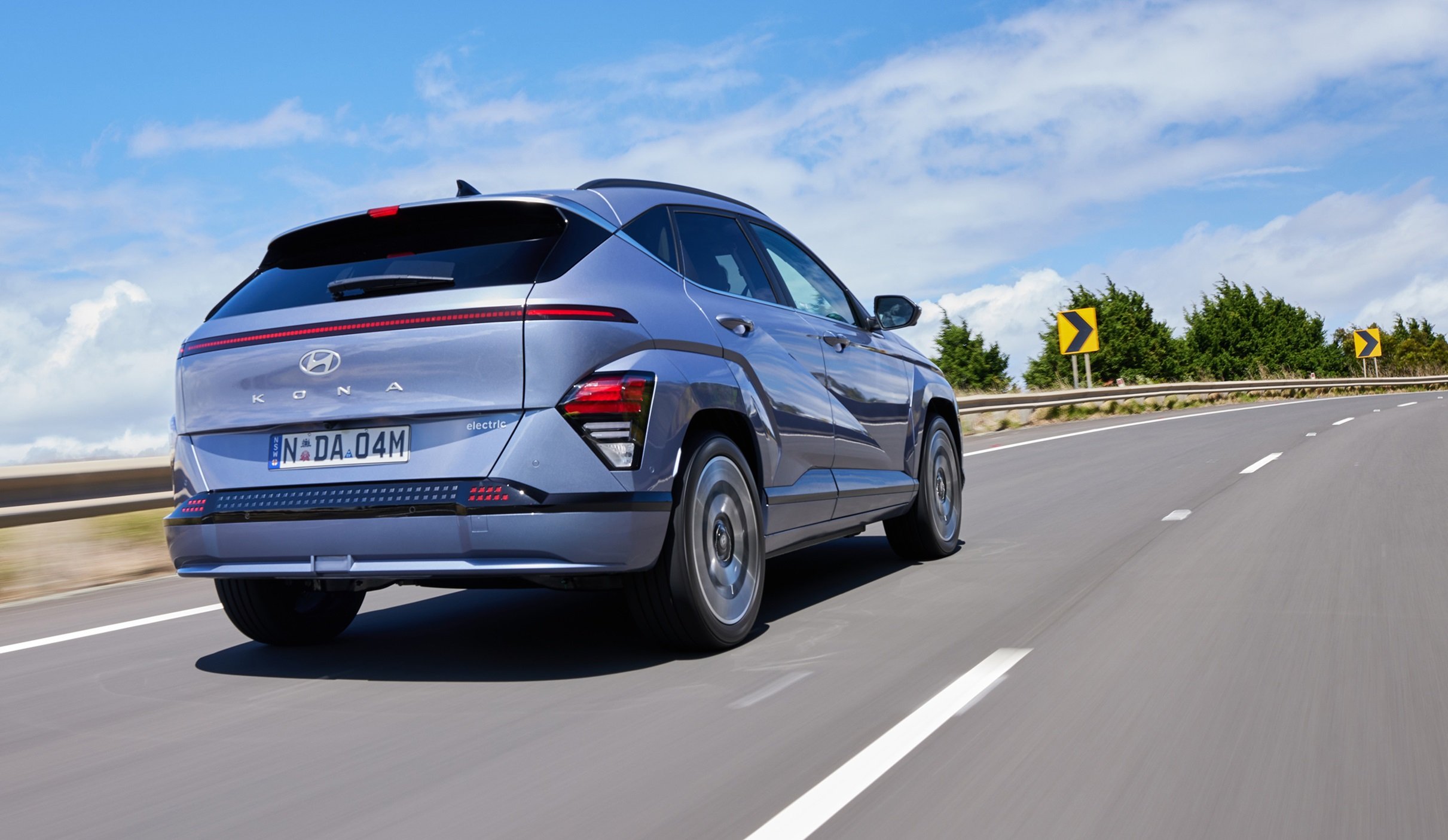
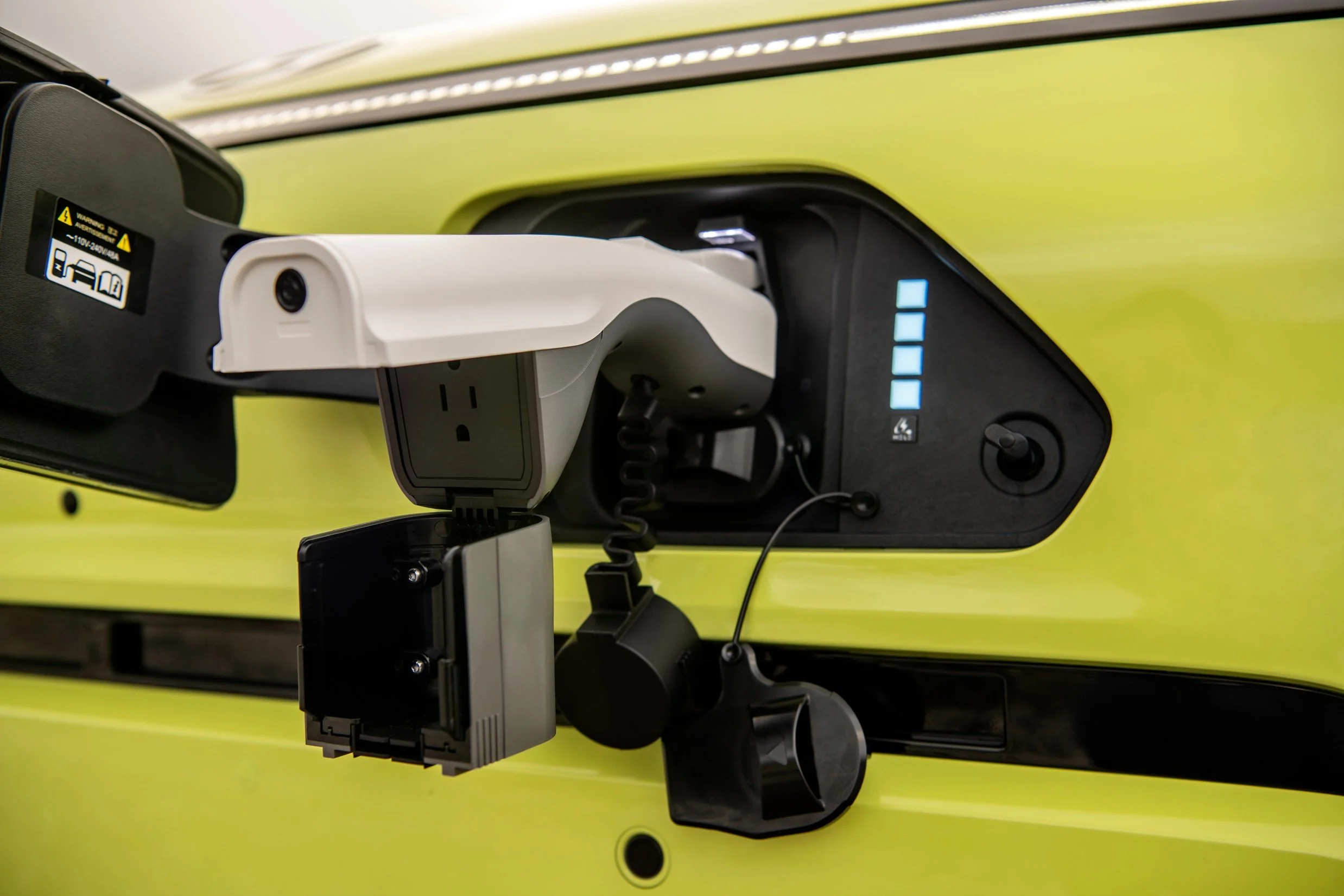


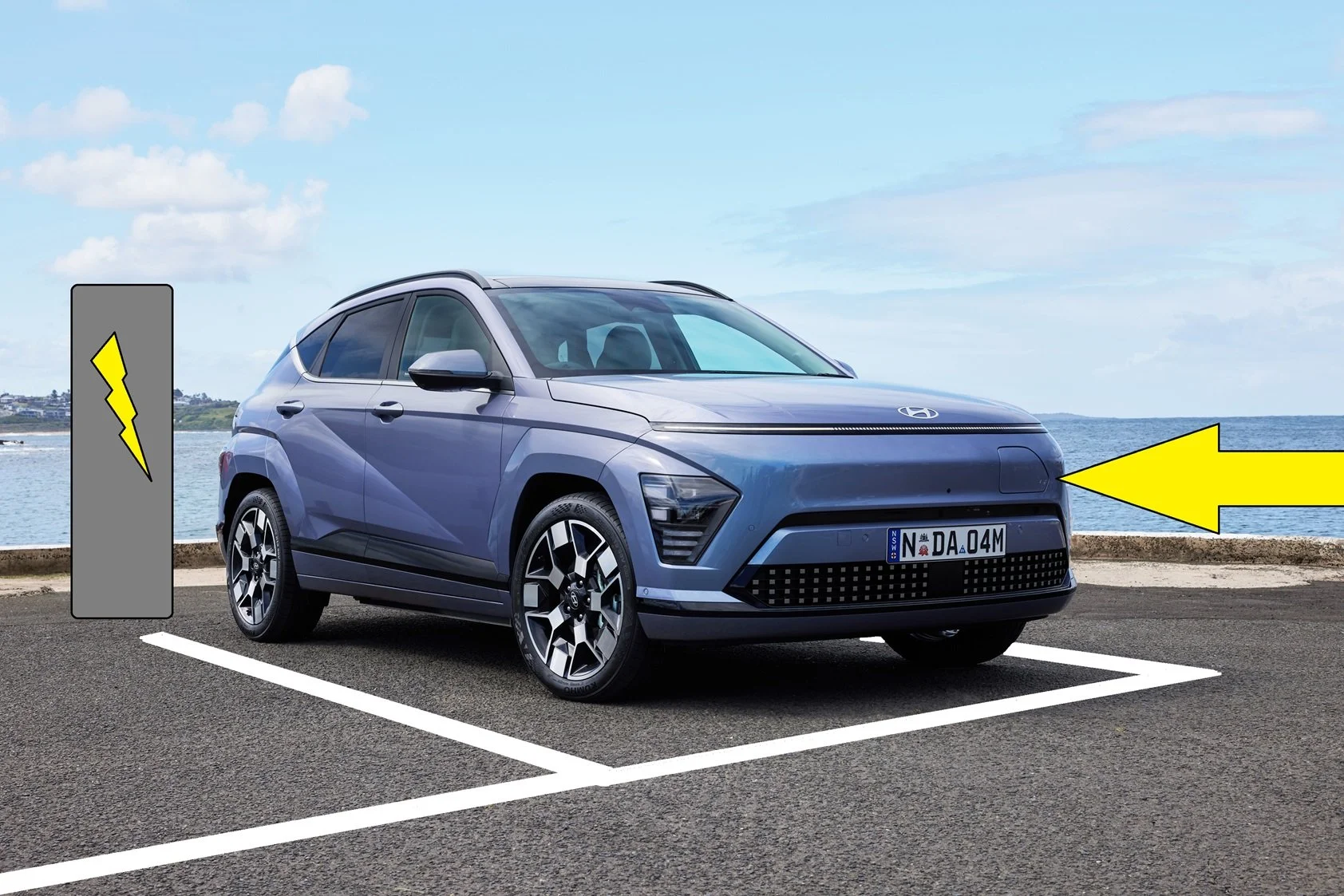
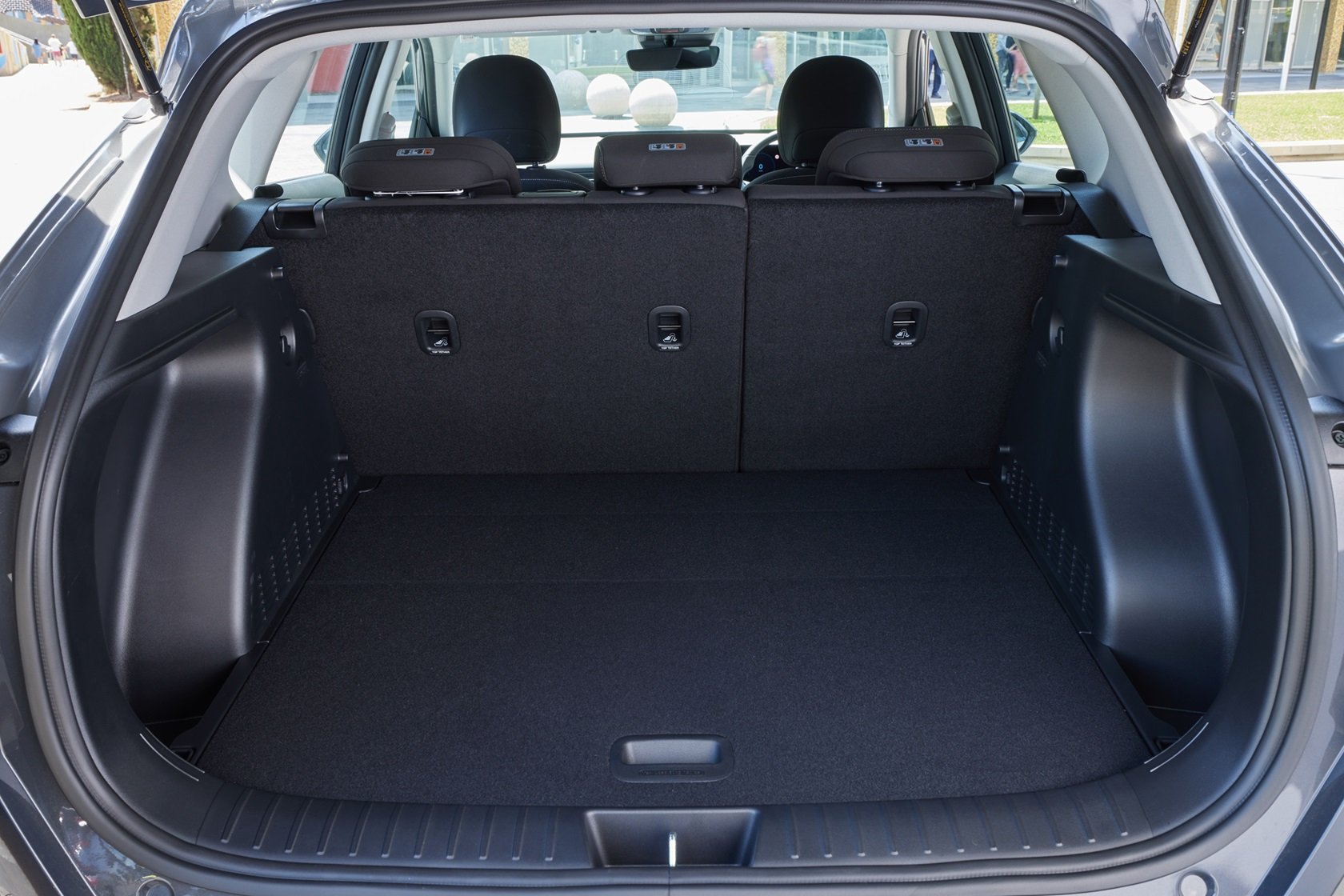
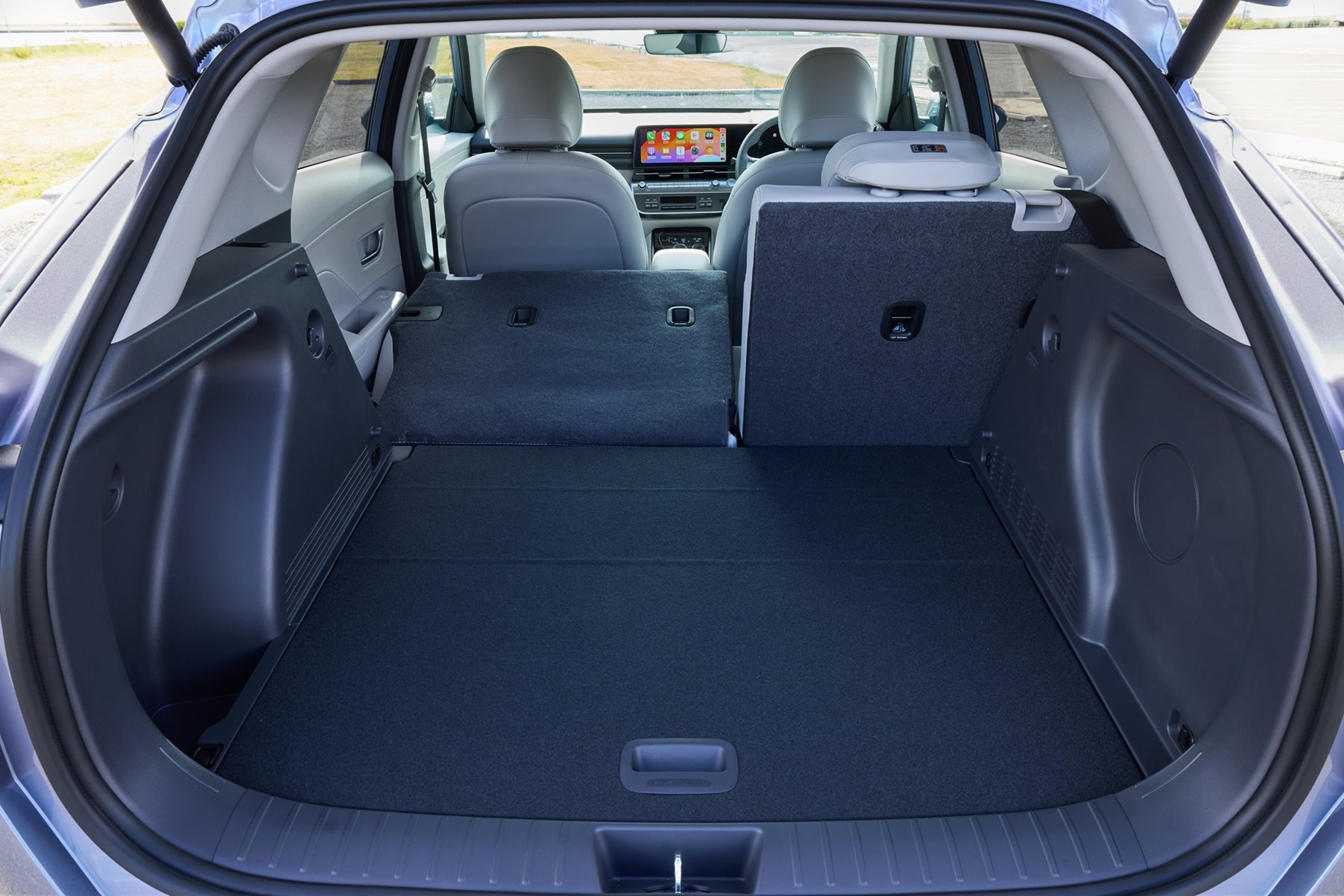
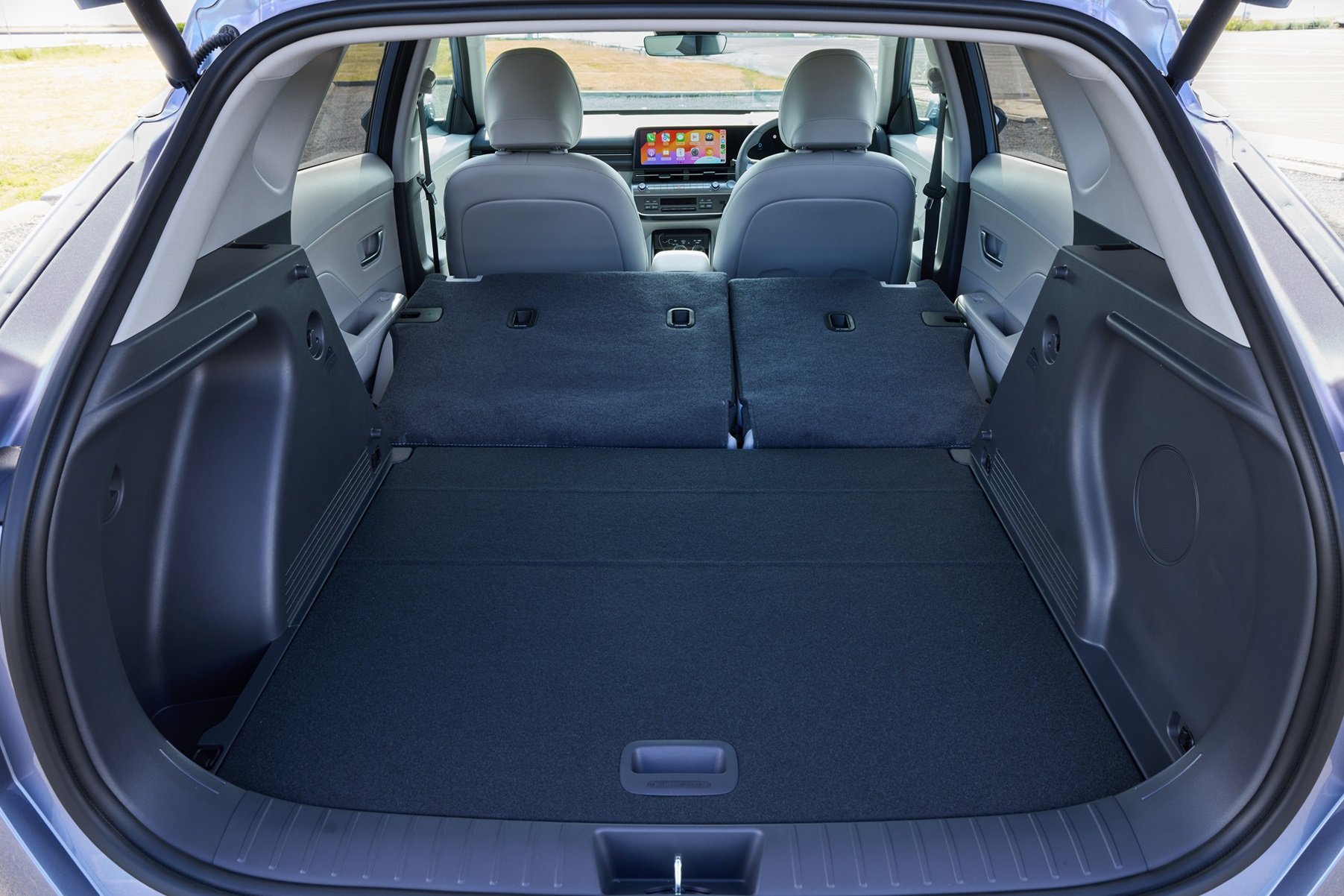
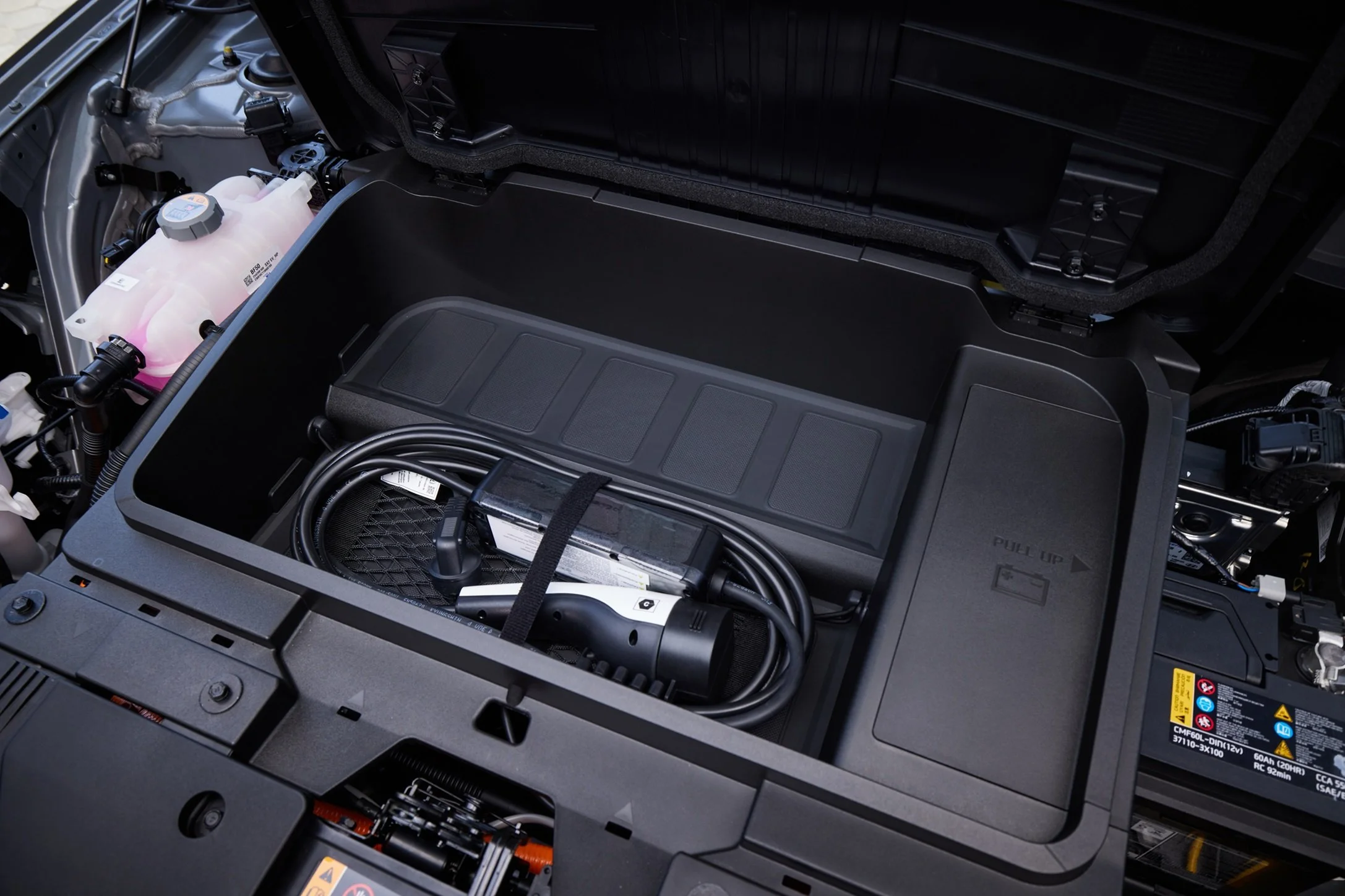














The Hilux is more than just an immensely popular 4X4 dual-cab ute here in Australia, it’s an icon. Toyota Hilux offers reliability, towing, good resale value and occasional family duties.